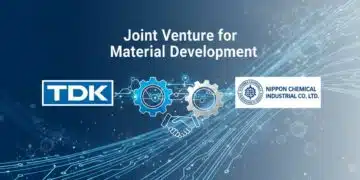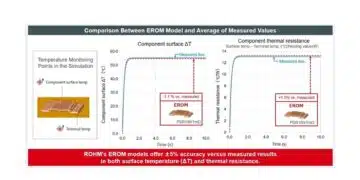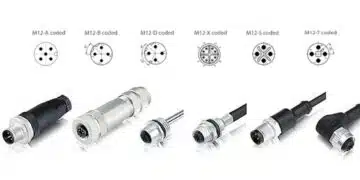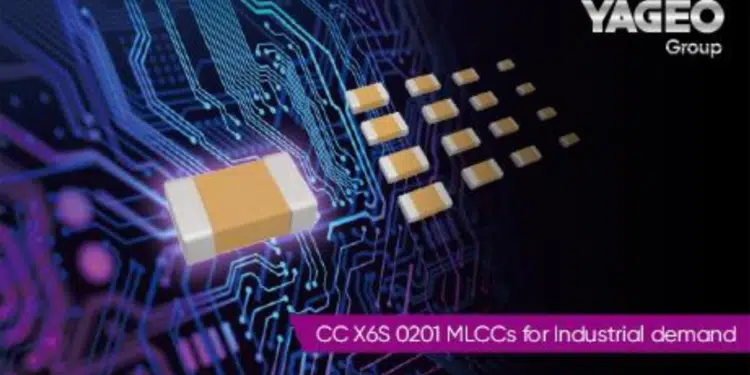YAGEO Group, the global leading passive component service provider, recently extended its CC X6S series to the smaller 0201 case size(0.6*0.3mm)1uF MLCC with 6.3V rated voltage.
The new product specifications further expand YAGEO’s X6S portfolio to cover case sizes from 0201 to 1210 with capacitance up to 47uF and rated voltage up to 50V. With this extension, the product range well meets a variety of diversified applications, while the most significant one is the server application. As the advanced electronic devices contain more functionality, suppressing the various electrical signal noises generated by equipment or EMI becomes a major issue.
High capacitance MLCC is needed to reduce the noise while maintaining a stable operating system. For example, when more operating systems change to digital, lots of CPUs are equipped, high capacitance MLCCs are used as decoupling capacitors to reduce the noises generated by the high-speed CPUs.
An example of a high capacitance MLCC application is the server. The features of a high-end server must include a powerful computing capability with huge storage space. Therefore, it can handle a massive amount of loading/unloading, filing, storage, etc., in a short time and provide services to lots of users simultaneously. The noises from such a high-speed data transmission need high capacitance MLCCs to suppress. Since an industrial server is usually in use constantly except for maintenance time, it is crucial to have the high capacitance MLCCs functionally to meet the everlasting demand for system stability under high temperatures.
While X5R, class II dielectrics with 85°C operating, is the most common material for high capacitance application, when the device’s operating temperature increases or long term working without shutting down, the X5R MLCCs may fail to meet the high stability and reliability expectation. Therefore, it is a better solution for X6S with a higher guaranteed operating temperature of 105°C to be demanded.
With premium designs in both material and processing, YAGEO’s X6S can reach a higher capacitance value than X7R, with a much better reliability performance than X5R. It offers customers a wider variety of choices and solutions to meet various application demands and requirements.
































